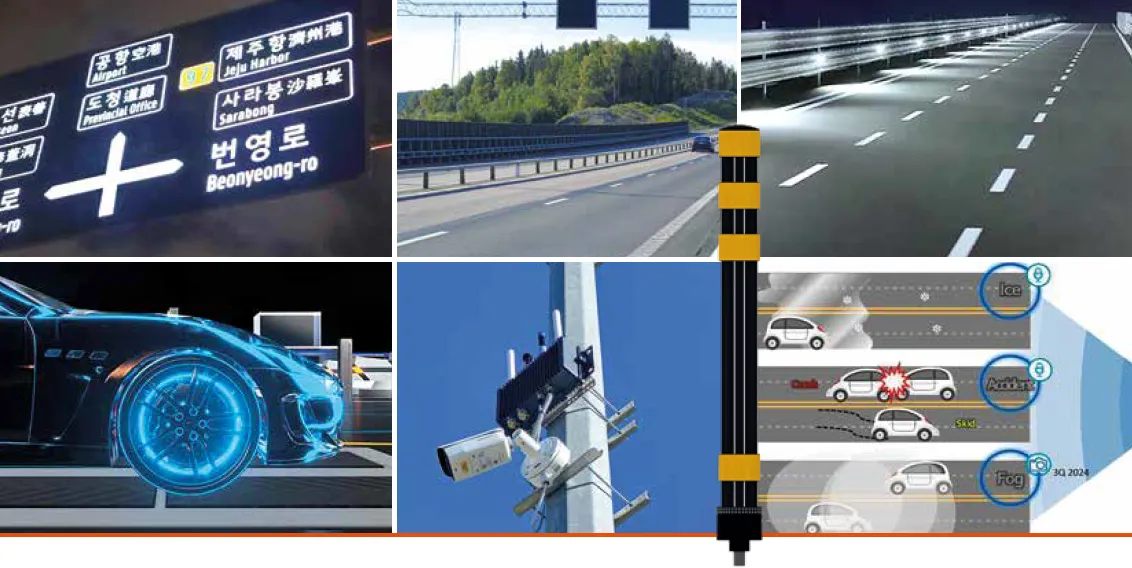
France’s first AID system has halved attendance time on the Calix Viaduct.
TheCentre for Traffic Engineering and Management (CIGT) at Caen in northern France manages 367km of the national network in the Manche/Calvados district including the 1.2km long, 15-span Calix Viaduct across the Canal de Caen à la Mer.
A sensitive point in metro Caen, the Calix Viaduct carries an average of 85,000 vehicles per day and up to 110,000 (including 5,000 heavy trucks), making this section of the RN814 one of France’s most heavily used four-lane highways. The viaduct carries four lanes but has no emergency lanes and only a 1.1m wide sidewalk to allow access to the emergency call network.
In addition, the viaduct is located above a costal oil depot which has a 63,000m³ capacity and is classified as a SEVESO II high-threshold site which complicates CIGT’s job in securing the structure. It is therefore essential that CIGT can monitor and detect incidents so staff can quickly launch interventions and send information to users and public organisations: police, fire department…
With the traffic operator monitoring the cameras manually, the average time taken to detect and attend an incident was 40 minutes.
Interdepartmental Road Management Northwest (Direction Interdépartementale de la route Nord-Ouest or DIRNO) decided to install automatic incident detection (AID) and chose a video-based system that processes streamed live video to identify incidents and accidents using image processing algorithms. Such systems have become increasingly popular for incident detection following the catastrophic Mont-Blanc tunnel fire in 1999.
CIGT’s system comprised eight
As the application runs inside the camera there is no need to stream real time video from all the cameras to the control centre 24/7, creating a significant bandwidth saving.
The image processing algorithm analyses movement within the frame and automatically spots any stopped trajectory in the image. As the intelligent cameras cover both the bridge and approaches, the control centre has real-time detection of stopped vehicles, accidents and traffic jams across the whole structure. The software automatically handles the alarms hierarchically (to eliminate duplication) and sends operators the information necessary to make a decision after a visual check. They can then disseminate the exact information including the nature and severity of the incident/accident, type of vehicle and any closed lanes. The video clips can be used for post-incident analysis and for identifying recurring problems.
Caen’s four traffic regulation operators and maintenance technicians investigate eight to 10 incidents this way each day and can apply different intervention procedures. “The operators at the Centre have a lot of responsibilities and can’t have their eye on all the monitors all day. AID is an intelligent tool that allows them to do their work more effectively. The previous 40-minute average intervention times have been cut in half since our smart cams were installed,” explains DIRNO’s Sebastien Lorin.
Besides the system’s efficiency, CIGT appreciates the solution’s interoperability as it connects directly with alert systems (panels with variable messages and light-up signals). The operators also prefer the image quality and reliability of detection even during the hours of darkness, heavy rain, snow or fog.
As a pilot site financed by the Ministry of the Environment, Energy and Seas, CIGT Caen is one of the first places in France to be equipped with AID in intelligent cameras, and it receives regular visits from other road management agencies. It is now considering adding additional equipment but must first expand the geographic coverage of the fibre optic network.
However, DIRNO has already committed to deploying smart cameras using the same technology in Rouen’s Tunnel de la Grand Mare and that system will be operational before the end of the year.









